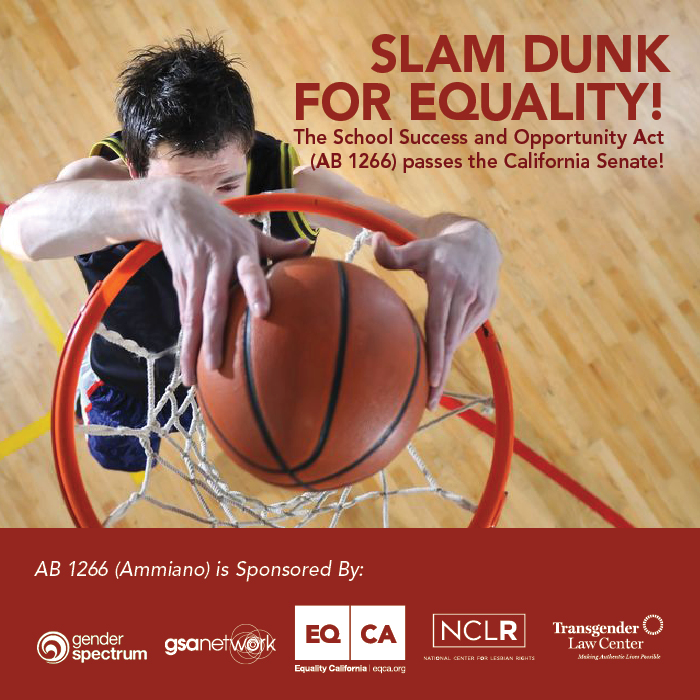
California Gov. Jerry Brown made history when he signed Assembly Bill (AB) 1266, a bill requiring schools to allow transgender students access to facilities and activities conforming to their gender identities—the first of its kind in the United States. The law should be applauded and supported for its efforts to fight discrimination and make the educational environment inclusive of transgender youth, who face disproportionately larger obstacles than peers who identify with the gender assigned to them at birth.
Anti-transgender bias challenges youth at all levels of education. One form of bias is hatred from fellow classmates: a 2007 survey of 6,209 Lesbian, Gay, Bisexual and Transgender (LGBT) youth by the Gay, Lesbian and Straight Education Network found that 89 percent of transgender students had been verbally harassed at school. School officials have also denied students the right to use their identified genders’ restrooms, as happened with six-year-old Coy Mathis. Transgender students have even been separated from other students, as was an unnamed Arcadia Unified student who was forced to room in a separate cabin on a field trip.
AB 1266 acknowledges this anti-transgender discrimination fights it by promoting respect of students’ gender identities in schools. The Los Angeles Unified School District (LAUSD), which has operated under a similar policy for nearly a decade, reports that the approach not only helps transgender youth but also helps other students to overcome their biases about gender identity and sexual orientation.
Opponents like State Assemblyman Tim Donnelly have claimed the law would encourage inappropriate behavior and violate the privacy of other students, who would feel uncomfortable being “ogled” in restrooms and locker rooms. This argument not only makes the faulty assumption that transgender youth wish to use gender-specific facilities because they are sexually interested in their peers, but also ignores the fact that school districts with equal access policies have reported no such problems.

Discomfort cannot validate discrimination. Just as it is unacceptable for gay and lesbian students to be banned from their genders’ facilities— which could be justified on the basis that they would make other students uncomfortable—it is unacceptable for transgender youth to face such discrimination.
Yet the objections to AB 1266 are merely based on discomfort and not totally dissimilar to the motivations behind the Jim Crow laws that were prevalent in the South after the Civil War. To white Southerners who felt uncomfortable that their supremacy was being challenged, discomfort warranted racial segregation in all public facilities in the former Confederacy. Yet those laws were struck down, correctly, by the US Supreme Court in Brown vs. Board of Education. Using discomfort to justify discrimination was unacceptable then, and it is no less unacceptable today.
Ensuring transgender students’ access to their appropriate facilities and activities allows them to succeed in school and is a step towards respect and tolerance throughout society. All Californians— particularly students, parents and teachers— need to show their support for AB 1266 and call for the effective enforcement of the law.

